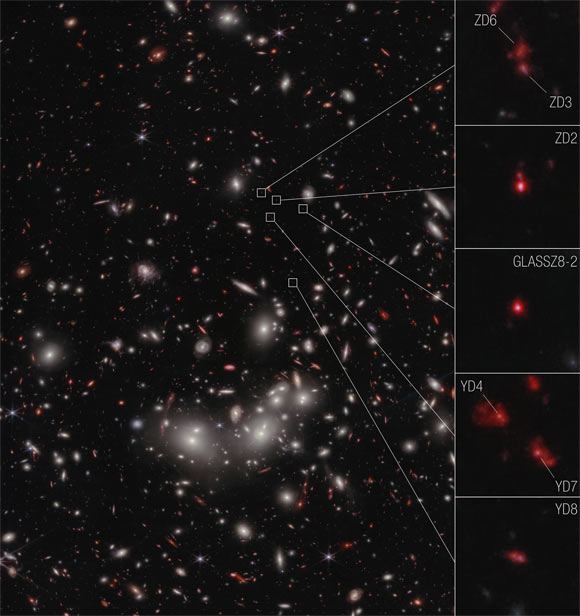Astronomers Identify Nickel and Surprising Elements in Early Star-Forming Galaxies
An analysis of data from the CECILIA (Chemical Evolution Constrained using Ionized Lines in Interstellar Aurorae) survey reveals that ancient starburst galaxies, which emerged 2-3 billion years after the Big Bang, exhibit unusual heat levels and harbor unexpected elements, including nickel.

During the early stages of the Universe, numerous galaxies underwent a phase of intense star formation. Presently, certain galaxies, like our Milky Way, continue to generate new stars, albeit at a less rapid pace, while others have ceased star formation altogether. This recent study aims to aid astronomers in comprehending the reasons behind these diverse evolutionary trajectories.
Dr. Allison Strom, an astronomer at Northwestern University, explained, “We’re trying to understand how galaxies grew and changed over the 14 billion years of cosmic history. Using the NASA/ESA/CSA James Webb Space Telescope, our program targets ‘teenage’ galaxies when they were going through a messy time of growth spurts and change.”
Dr. Strom and her colleagues analyzed spectra from 33 distant galaxies, breaking down their light into individual wavelengths. By combining the spectra of all 33 galaxies, the astronomers created the most profound spectrum of a distant galaxy to date, a feat that would require 600 hours of telescope time to replicate.
Through the analysis of spectra, the astronomers identified eight distinct elements in these galaxies: hydrogen, helium, nitrogen, oxygen, silicon, sulfur, argon, and notably, nickel. The ability to measure the light of these elements is groundbreaking and highlights the capabilities of the James Webb Space Telescope.
The presence of nickel, a challenging element to observe, surprised the researchers. Dr. Strom expressed her astonishment, stating, “Never in my wildest dreams did I imagine we would see nickel. Even in nearby galaxies, people don’t observe this. There has to be enough of an element present in a galaxy and the right conditions to observe it.”
The findings also revealed that these teenage galaxies exhibited extremely high temperatures, surpassing 13,350 degrees Celsius, contrasting sharply with the expectations based on the characteristics of more mature galaxies. Dr. Rudie emphasized, “We expected these early galaxies to have very, very different chemistry from our own Milky Way and the galaxies that surround us today. But we were still surprised by what Webb revealed.”
The discovery is described in a paper in the Astrophysical Journal Letters.
Do not forget to share your opinion with us to provide you with the best posts !



0 Comments